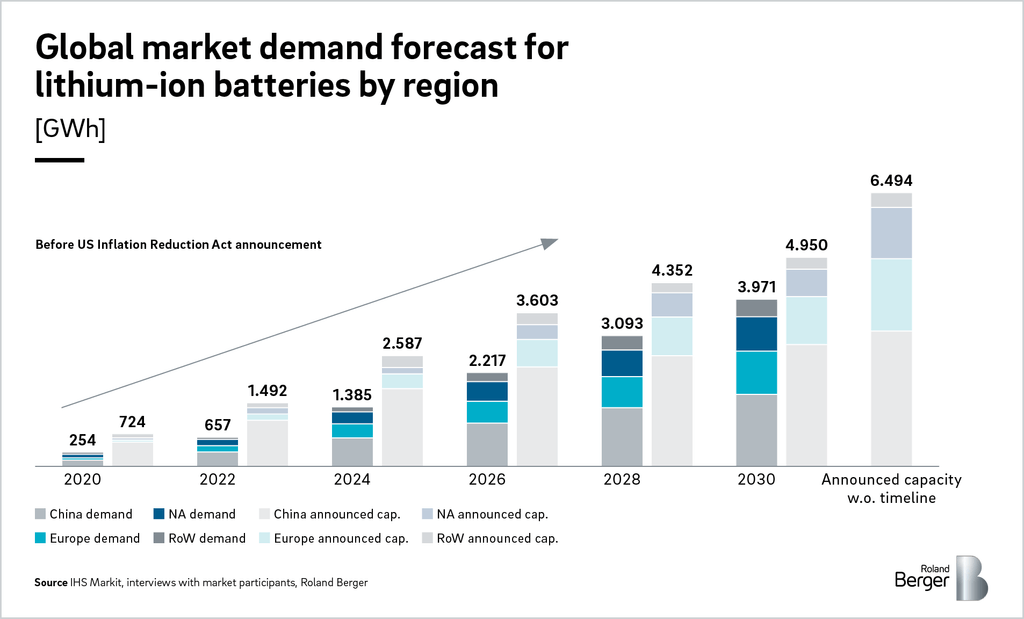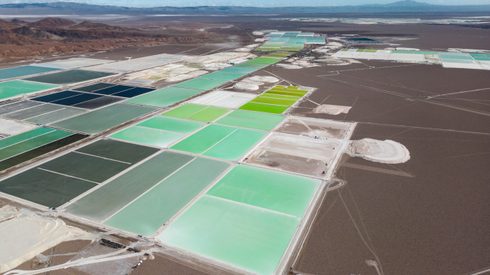 Wolfgang Bernhart has been working as a senior partner at Roland Berger since 2007. He supports automotive, industrial and technology clients globally. One of his core area of expertise lies in the lithium-ion battery industry. Wolfgang will be delivering a presentation on electric vehicle (EV) and energy storage system (ESS) battery demand at the Fastmarkets Asian Battery Materials Conference.
Wolfgang Bernhart has been working as a senior partner at Roland Berger since 2007. He supports automotive, industrial and technology clients globally. One of his core area of expertise lies in the lithium-ion battery industry. Wolfgang will be delivering a presentation on electric vehicle (EV) and energy storage system (ESS) battery demand at the Fastmarkets Asian Battery Materials Conference.
The battery market has transformed in the past couple of decades, driven by the fast-growing EV market and demand for ever-more powerful batteries. Roland Berger believe that three key performance indicators, based on the life-cycle phases of lithium-ion batteries (LiBs), help to best define its current characteristics. These are sustainability, technology performance and market competitiveness. This article is the first in a two-part series. Below outlines some key findings from the first report.
Sustainability: Regulations set to bite
Largely as a result of the EV boom, LiB battery production has soared. This is putting pressure on raw material availability and placing the entire battery life cycle under increasing scrutiny. Sustainability is now becoming a key priority for market players.
The phasing out of the internal combustion engine (ICE) – which several countries, including Germany, the UK and Canada have already announced – will have a huge impact.
The EU’s Carbon Border Adjustment Mechanism (CBAM) could also affect the European battery value chain. Beginning in 2023, it will levy an import tax on emissions “embedded” in imported goods, such as metals produced outside the EU. If battery materials are covered, which is currently uncertain, CBAM could push up the price of cathode active materials by up to USD 1.60 per kilogram.
Technology performance: Specialized products take off
There are several general trends in LiB development, covered in detail in the full report. The first involves the proliferation of cells for specialized products.
To date, most batteries used in new applications have been derivatives of existing cells. But the growing and maturing market now offers a stronger platform to cost-effectively produce entirely new systems for novel and existing uses. Batteries for the electric vertical take-off and landing (eVTOL) in the aerospace industry are a good example. These aircraft have rapidly advanced in the past few years, and typical consumer cells no longer meet their energy and power density needs. Instead, high-performance cells with features such as high-silicon anodes and pre-lithiation are being specifically developed and produced for eVTOL applications, as a critical demand for multiple GWh is reached.
With resources at a premium, another general trend is markets’ efforts to secure their supply of materials, which will lead to lock-in effects. For example, Europe and North America are currently focusing on nickel-based materials and battery players secure this material via long-term agreements or direct investments. So, they will likely stick to the technology as they know they can recycle the nickel in the future. Indonesia, meanwhile, has legislated to ensure that most of its locally available raw materials, such as nickel, can only be processed in the country.
Competitiveness: Overcapacity looms
The LiB market is in danger of becoming overheated. Demand is insatiable, especially from the EV market, and producers are at the limit of their capacity to meet it. However, as more and more producers emerge, overcapacity will become a problem soon. The EV industry is forecasted to account for 90% of the global battery demand in 2030, equivalent to four terawatt hours (TWh). However, the announced global capacity for 2030 is more than 6 TWh now. While demand forecasted is constantly adjusted to higher numbers, this initially announced installed overcapacity will lead to low utilization and ultimately low or negative profits. Consolidation, delay as well as stranded investments, are likely – as the battery industry also faces a huge fight for talent.

An expected undersupply of raw materials, especially nickel, will be another major challenge. China has long been the global leader in refining, with around 70% of lithium and 30% of nickel processed there. This gives the country a significant competitive advantage. To counter it, there is a growing push towards localization, with governments regulating to ease battery producers’ reliance on China.
In Europe, this includes the EU’s Battery Directive and CBAM. In the US, a “Buy American” strategy has seen tariffs of up to 25% placed on Chinese-produced battery cells, minerals and other materials, while the Inflation Reduction Act (IRA) of August 2022 offers further incentives for local sourcing, with up to USD12,000 of tax credits for EVs and their batteries.
Hear more from Wolfgang Bernhart
Hear Wolfgang Bernhart speak at the Fastmarkets Asian Battery Materials Conference 2023 in Singapore. He’ll be delivering a presentation on EV and ESS battery: Demand projections by region. See the event agenda for more details.
This article was originally published in Roland Berger Insights.





